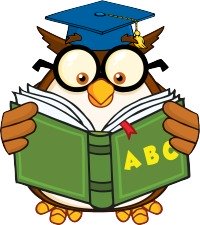Homeschool Reading Curriculum for 1st Grade
A homeschool reading curriculum for 1st grade focuses on building foundational skills through phonics mastery and sight word recognition. It includes interactive story reading, vocabulary development, and guided reading sessions, promoting a love for diverse genres and early chapter books. As the child progresses, the curriculum increases in complexity, encouraging independent reading and laying a solid groundwork for lifelong literacy.
Homeschool Reading Curriculum for 1st Grade Sample
Weeks 1-4: Phonics Foundations
- Introduction to short vowel sounds and basic consonant blends.
- Practice reading simple three-letter words.
- Engage in phonics games and activities.
Weeks 5-8: Sight Words Mastery
- Introduce common sight words.
- Create flashcards and use interactive games for reinforcement.
- Begin incorporating sight words into short sentences.
Weeks 9-12: Interactive Story Reading
- Read a variety of interactive and engaging picture books.
- Discuss story elements like characters, setting, and plot.
- Encourage retelling of stories in the child's own words.
Weeks 13-16: Early Chapter Books
- Introduce early chapter books with larger print and simple sentences.
- Read together and discuss the main ideas and events.
- Foster comprehension skills through questions.

Weeks 17-20: Exploring Genres
- Introduce different genres like fiction, non-fiction, and poetry.
- Read books from each genre and discuss their unique features.
- Encourage students to express preferences.
Weeks 21-24: Word Families and Rhyming Words
- Explore word families and rhyming words through activities.
- Create simple word family books.
- Practice identifying and generating rhyming words.
Weeks 25-28: Guided Reading Sessions
- Implement guided reading sessions with leveled books.
- Focus on comprehension, fluency, and expression.
- Encourage discussions about character motivations and story events.
Weeks 29-32: Creative Writing
- Introduce basic writing skills through short sentences and stories.
- Connect reading to writing by allowing students to create their tales.
- Emphasize creativity and expression.
Weeks 33-36: Review and Celebration
- Review key concepts learned throughout the year.
- Celebrate progress with a reading-themed activity or project.
- Provide a list of recommended books for summer reading.
Adjust this sample homeschool reading curriculum for 1st grade to match your child's readiness and interests, and incorporate hands-on activities, games, and outdoor reading to make the learning experience enjoyable.

Homeschool Reading Curriculum for 1st Grade Time Spent
For 1st-grade homeschoolers, the recommended amount of time spent on reading activities can vary. Still, a general guideline is about 20 to 30 minutes per day. Here's a breakdown:
1. Daily Reading Aloud (10-15 minutes):
- Begin each day with a read-aloud session using engaging and age-appropriate books.
- Discuss the story and characters and encourage questions.
2. Phonics and Sight Words Practice (5-10 minutes):
- Focus on phonics exercises and sight word practice to build foundational reading skills.
- Utilize games, flashcards, and interactive activities.
3. Guided Reading (10-15 minutes):
- Implement guided reading sessions with leveled books.
- Work on comprehension, fluency, and expression.
4. Independent reading (5-10 minutes):
- Encourage independent reading with books suitable for the child's reading level.
- Gradually increase the reading time as the child's skills improve.
5. Literacy-Related Activities (10 minutes):
- Incorporate literacy-related activities such as creative writing, word games, or storytelling.
- Keep these activities interactive and enjoyable.
It is crucial to consider the child's needs and attention span when engaging them in reading-related activities. Instead of a single long session, short and focused sessions spread throughout the day are more effective. Furthermore, paying attention to the child's interests and adjusting the reading material accordingly is essential. Encouraging a positive and enjoyable learning experience is recommended to nurture the child's love for reading.


